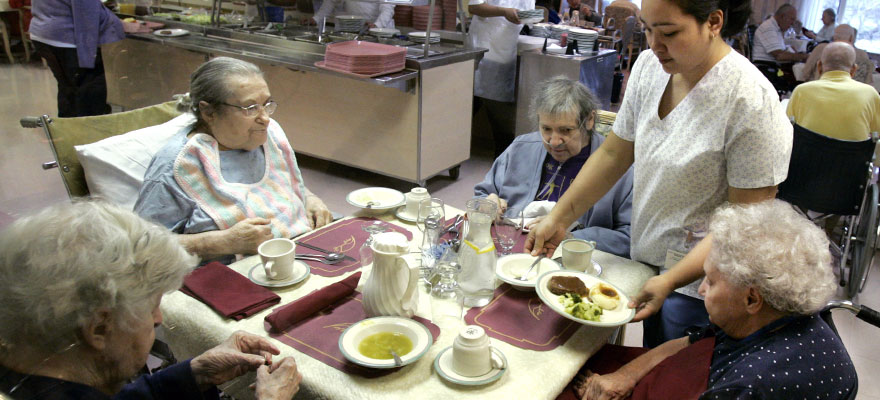
As the baby boomer generation ages, concerns of a “silver tsunami” have grown. But there is a critical difference between an actual tsunami and a metaphorical tide of aging Americans: We can see this coming and we can prepare for it. While we are not fully prepared to meet the housing and health needs of an aging population, efforts are underway at the federal, state, and local levels to learn how to better serve seniors.
One such effort is Cathedral Square’s Support and Services at Home (SASH) program in Vermont. SASH is premised on the fact that many high-cost users of the health care system are low-income elderly living in subsidized senior housing. Cathedral Square recognizes that housing providers, who have existing relationships with their residents, are well-positioned to assess residents’ needs, manage services and supports, and assist them in implementing care and wellness plans—if the housing providers can get money to pay for their services.
SASH shows promise for seniors
Elderly people who live in subsidized senior housing have high medical costs, as a pilot that matched Medicare and Medicaid costs with housing assistance from the US Department of Housing and Urban Development (HUD) found. HUD-assisted individuals who were eligible for both Medicare and Medicaid (i.e., dual eligible) used more hospital services and had higher related costs than other dual-eligible individuals.
Delivery reforms promoted by the Affordable Care Act provide opportunities for better care at lower costs for dual- eligible individuals through greater coordination of care. SASH, funded through a Medicare demonstration, proposes a mechanism to accomplish this goal.
SASH panels are groups of residents residing in HUD-assisted housing. The local housing provider has a service coordinator and wellness nurse who work with local health care providers and organizations to form a SASH team. These linkages enable coordination and continuity of care; individuals are never “discharged” since housing is a key component.
So far SASH’s approach to a housing-based, care-management model shows signs of success.
A recent evaluation looking at expenditures and utilization found that SASH program participants, particularly those in the earlier panels, had a lower rate of growth in total Medicare expenditures than those in two comparison groups. At this early stage in the demonstration, the results are suggestive as the trends were not statistically significant.
SASH participants had greater rates of hospitalization and emergency room visits than one of the comparison groups. Higher usage but lower spending increases – these results could reflect shorter hospital stays or other benefits from greater coordination among providers.
At the core of programs like SASH is the belief that housing providers can serve a key role in helping individuals identify resources, overcome barriers to seeking treatment, and better comply with medical recommendations. Equally important is the recognition that housing itself can be used to improve wellbeing and quality of life. Buildings can be designed to better meet seniors’ needs; services can be efficiently delivered at congregate settings.
While the SASH evaluation was an important step, we still have some unanswered questions, including
- What component of the program is associated with lower cost increases? Particularly, what kinds of support services are most helpful in deterring health problems and hospitalizations?
- Does SASH’s approach to providing health services lead to better outcomes for the beneficiaries?
- Do the results vary among the different SASH teams? If so, this would suggest that specific coordinators, nurses, or local partnerships are integral to the results.
The preliminary picture looks promising as programs like SASH improve the effectiveness of health-care spending. However, such programs need further examination to understand how best to align housing and health services to improve outcomes for older adults.
The Assisted Housing Initiative is a project of the Urban Institute, made possible by support from Housing Authority Insurance, Inc. (HAI, Inc.), to provide fact-based analysis about public and assisted housing. The Urban Institute is a nonprofit, nonpartisan research organization and retains independent and exclusive control over substance and quality of any Assisted Housing Initiative products. The views expressed in this and other Assisted Housing Initiative commentaries are those of the authors and should not be attributed to the Urban Institute or HAI, Inc.
Photo: (AP Photo/Charles Rex Arbogast)
Tune in and subscribe today.
The Urban Institute podcast, Evidence in Action, inspires changemakers to lead with evidence and act with equity. Cohosted by Urban President Sarah Rosen Wartell and Executive Vice President Kimberlyn Leary, every episode features in-depth discussions with experts and leaders on topics ranging from how to advance equity, to designing innovative solutions that achieve community impact, to what it means to practice evidence-based leadership.